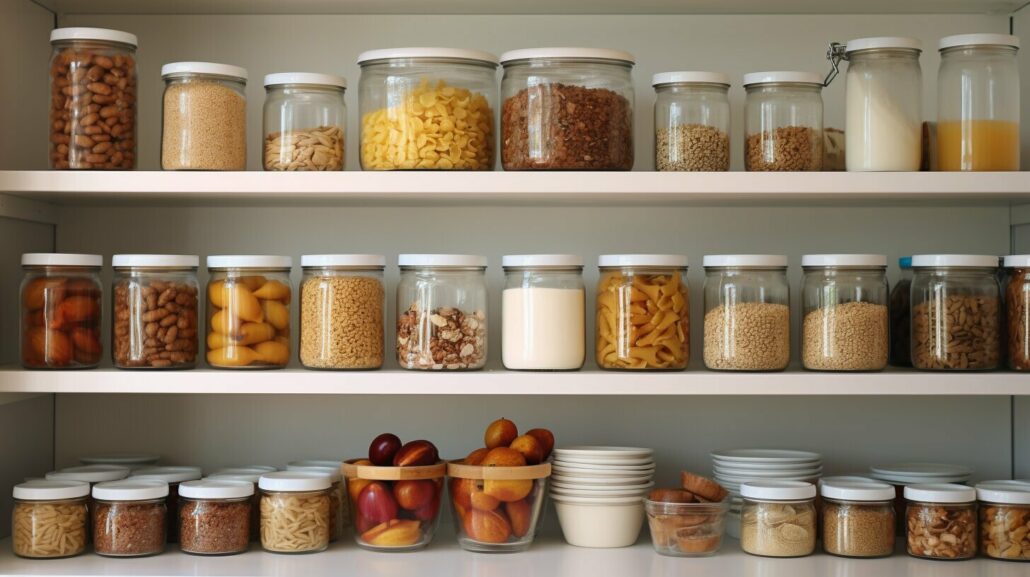As a dedicated homeowner, prioritizing home safety is essential in ensuring the well-being of your family and protecting your valuable assets. One crucial aspect of a secure household is fire prevention, which begins with the identification and mitigation of potential fire hazards. By addressing common sources of fires, such as electrical issues, heating equipment, cooking areas, and smoking practices, homeowners can create a safer living environment for everyone.
Regular inspections focusing on fire risks are vital to maintaining a secure household. By taking the time to assess potential dangers and implement preventative measures, you can significantly reduce the chances of a devastating fire occurring in your home. In this article, we discuss some practical steps you can take to minimize fire hazards and ensure a safe and comfortable living space for your loved ones.
Key Takeaways
- Addressing fire hazards by identifying and mitigating common sources of fires.
- Regular household inspections should focus on electrical issues, heating equipment, cooking areas, and smoking practices.
- Minimize fire risks by implementing appropriate safety measures and precautions.
- Create a safer living environment by staying informed and actively involved in fire prevention.
- Regular fire drills and emergency preparation are essential components of home fire safety.
The Startling Speed of House Fires: Understanding the Basics
When it comes to fire safety and addressing house fire dangers, one crucial aspect to understand is the alarming speed at which a small flame can escalate into a life-threatening situation. In some cases, this can occur within as little as two minutes, emphasizing the importance of understanding fire dynamics and prevention tactics. Familiarity with the basics of fire safety, such as early detection through smoke detectors and planned escape routes, is vital for a quick and effective response to limit fire damage and ensure personal safety.
To illustrate the importance of quick response and preparedness, let’s take a closer look at the factors that contribute to the rapid spread of house fires:
- Combustible materials: The presence of flammable items, such as curtains, furniture, and paper products, can feed the fire and cause it to spread quickly.
- Room layout: Closed spaces, such as bedrooms and living rooms, can trap heat and cause temperatures to rise rapidly, accelerating the spread of flames.
- Oxygen supply: As fires consume oxygen, they produce harmful gases that displace breathable air. limited oxygen can lead to rapid fire growth and intensify the fire’s heat.
Considering the high risks associated with house fires, it becomes crucial to implement effective fire prevention measures. One way to do this is by acknowledging the need for early detection systems and escape plans. Let’s explore these solutions further:
| Early Detection | Escape Plans |
|---|---|
| Install smoke alarms on every level of your home, including in each sleeping area, to provide timely warnings in the event of a fire. | Create a comprehensive fire escape plan, ensuring all family members are aware of the designated exits and safe meeting points outside. |
| Test smoke alarms monthly and replace batteries at least once a year, or opt for alarms with 10-year batteries to reduce maintenance needs. | Practice the escape plan regularly by carrying out fire drills, involving different scenarios and simulating challenges such as blocked exits or low visibility. |
“Just as a small fire produces a small amount of heat, a large fire produces a large amount of heat. That heat can ignite nearby combustibles and cause the fire to spread rapidly.” – National Fire Protection Association
Understanding the swift and lethal nature of house fires, as well as the importance of fire safety measures, is essential to fostering a secure home environment. By prioritizing early detection and well-planned escape routes, you can protect your property and, most importantly, save lives.
The Significance of Regular Fire Risk Assessments at Home
Conducting regular fire risk assessments at home plays a crucial role in maintaining a safe living environment. By proactively identifying and addressing potential hazards, homeowners can greatly reduce the likelihood of household fires. This section will focus on electrical safety, heating safety, and common kitchen fire hazards.
Spotting Electrical Red Flags: Outlets and Wires
Electrical fires are a common cause of household fires, but they can be easily prevented with regular inspections and maintenance. To ensure electrical safety, it is important to avoid overloading circuits, inspect wiring for signs of damage, and promptly replace any damaged wires. The following list outlines some steps to spot electrical red flags in your home:
- Regularly check outlets for signs of blackening or scorch marks.
- Inspect cords for signs of wear, fraying, or exposed wires.
- Replace damaged cords and avoid using extension cords as a permanent solution.
- Ensure that electrical work is performed by a licensed electrician.
Heating Equipment: Safe Operation and Maintenance
Maintaining heating equipment greatly contributes to fire protection at home. Improper use or poorly maintained equipment can create unnecessary fire risks. Regular inspections, cleaning, and maintenance can help ensure safe operation. Some steps to maintain and safely operate heating equipment include:
- Keep flammable materials at least 3 feet away from heat sources, such as radiators and space heaters.
- Inspect and clean chimneys, vents, and filters at least once a year.
- Always turn off space heaters when not in use or unattended.
- Use only the manufacturer-approved fuel for heating appliances.
The Kitchen: A Hotspot for Household Fire Hazards
Many household fires start in the kitchen, often due to unattended cooking, grease buildup, or faulty electrical appliances. Establishing good cooking habits and regularly inspecting kitchen appliances can significantly reduce the risk of kitchen fires.
| Kitchen Fire Hazard | Action to Prevent Fire |
|---|---|
| Unattended Cooking | Never leave cooking unattended and use a timer to remind yourself to check on the food. |
| Grease Buildup | Clean cooktops, ovens, and exhaust fans regularly to remove grease and other flammable residues. |
| Faulty Electrical Appliances | Inspect cords and plugs for wear or damage and repair or replace them if needed. |
In conclusion, conducting regular fire risk assessments at home can effectively increase fire protection and minimize fire hazards. By addressing electrical safety, heating safety, and kitchen fire hazards, homeowners can make their homes a safer place for everyone.
Mastering Fire Prevention: Essential Tips for Home Safety
Fire safety is crucial for the protection of your home and loved ones. By implementing essential fire safety tips, you can ensure a safer environment for your family. In this section, we will discuss practical measures you can adopt to reduce the risk of fires in your home.
- Install Smoke Detectors: Smoke detectors are a critical component of a comprehensive fire safety plan. Make sure that you have detectors on every level of your home and inside each bedroom. Remember to test them monthly and replace batteries at least once a year.
- Proper Storage of Flammable Materials: Store gasoline, paint, solvents, and other flammable items in a cool and well-ventilated area. Make sure to use appropriate containers for flammable liquids and keep them away from sources of heat, sparks, and open flames.
- Regularly Review Electrical Systems: Inspect your home’s electrical system regularly to prevent potential electrical fires. Replace worn or frayed cords and avoid overloading outlets and extension cords.
- Practice Safe Cooking: Keep a watchful eye while cooking to prevent kitchen fires. Use a timer to remind you when cooking is done, keep your cooking area clean, and avoid wearing loose-fitting clothes that might catch fire easily.
- Maintain Heating Equipment: Regularly clean and maintain heating appliances like furnaces, chimneys, and space heaters. Keep them a safe distance from combustible materials and use a proper screen or enclosure for a fireplace.
Moreover, educating yourself and your family on fire safety practices plays a significant role in preventing fires at home. Consider the following table as a guideline for essential topics to cover in your fire safety education:
| Fire Safety Topics | Key Points |
|---|---|
| Fire Drill Practices | Conduct regular fire drills to ensure that everyone in the family is familiar with the evacuation plan and knows what to do in case of a fire. |
| Proper Use of Fire Extinguishers | Understand the different types of fire extinguishers and their proper usage. Keep a fire extinguisher handy in high-risk areas like the kitchen, garage, and workshop. |
| Safe Handling of Matches and Lighters | Teach children about the dangers of playing with matches and lighters, and always store them securely out of their reach. |
| First Aid and Emergency Procedures | Ensure all family members are familiar with basic first aid and emergency procedures. This includes treating burns, cuts, and other injuries that may occur during a fire. |
By implementing these fire safety tips and engaging in fire safety education, you can create a safer living environment for you and your loved ones.
Integrating Smoke Detectors into Your Fire Safety Plan
Smoke detectors are an essential component of your home fire safety plan, as they provide early warning signals during a fire incident, allowing you and your family enough time to evacuate. You must select reliable brands and install them strategically for optimal protection.
Selection and Placement of Smoke Detectors
When choosing smoke detectors, opt for established and trustworthy brands such as Kidde or First Alert to ensure the quality and performance of the device. To effectively integrate smoke detectors into your fire safety plan, consider the following placement guidelines:
- Install smoke detectors on every level of your home, including the basement.
- Place smoke detectors in every sleeping area and outside each separate sleeping area.
- Install devices at least 10 feet away from cooking appliances to minimize false alarms.
- Mount detectors high on walls (but not more than a foot from the ceiling) or on the ceiling itself, as smoke rises.
Proper placement ensures that smoke detectors can swiftly detect fires and increase your family’s safety.
Maintenance: Testing and Battery Replacement
Maintaining your smoke detectors is vital for ensuring their functionality and effectiveness in detecting fires. Regular maintenance entails:
- Testing the devices monthly by pressing the test button, which should trigger an alarm. If not, check and replace batteries or consult the manufacturer for further assistance.
- Replacing the batteries at least once a year or when the low-battery warning signal sounds. Some newer smoke detectors come with a 10-year lithium battery, which does not require frequent replacement but should be replaced entirely after a decade of usage.
- Cleaning the devices every six months by gently vacuuming their vents to remove dust and other debris, which can impair their sensitivity.
By incorporating smoke detectors into your home fire safety plan, selecting reliable brands, maintaining their functionality, and placing them strategically, you can significantly enhance your family’s safety and effectively respond to fire emergencies.
Fireproofing Your Space: The Role of Flame-Resistant Materials
Creating a fire safe home is a top priority for homeowners. One way to significantly reduce the chances of fire propagation and ensure a safer living environment is through the use of flame-resistant materials in home furnishings, décor, and bedding. These special materials are designed to withstand high temperatures and resist ignition, delaying the spread of fire and buying precious time in case of an emergency.
Several options are available for incorporating flame-resistant materials into your home, including:
- Flame-retardant-treated fabric for curtains, upholstery, and carpets
- Fire-resistant wall coverings and paint
- Flame-resistant foam in mattresses and furniture
- Intumescent fire-resistant sealants for filling gaps and joints in walls or ceilings
It is important to note that while these materials can significantly improve fire safety at home, it is still crucial to follow proper fire prevention practices and maintain functional smoke detectors in all living spaces. Always remain vigilant and address potential fire hazards in a timely manner.
“Flame-resistant materials should be seen as an integral aspect of fireproofing living spaces.”
| Product | Manufacturer | Function |
|---|---|---|
| Flame Retardant Fabric | Tex tech Industries | Resist ignition and delay potential spread of fire on fabric surfaces |
| Fire-Resistant Paint | PPG Architectural Coatings | Prevent fire from spreading on walls and ceilings |
| Flame-Resistant Foam | CertiPUR-US | Withstand high temperatures in mattresses and furniture cushions |
| Intumescent Fire-Resistant Sealant | 3M | Fill gaps and joints in walls or ceilings to contain fire |
In conclusion, incorporating flame-resistant materials in your home furnishings, décor, and bedding serves as a practical and effective approach to fireproofing living spaces. By investing in these materials, you can better protect your home and family, providing peace of mind in creating a fire safe home.
Proper Use and Maintenance of Cooking Equipment to Prevent Fires
Cooking requires utmost attention to safety, as it poses a high risk of fire accidents. Ensuring cooking equipment safety can help prevent fire hazards in the kitchen and is essential for maintaining a safe living environment. In this section, we will discuss some vital kitchen safety protocols and how to maintain cooking equipment properly.
-
Never leave cooking unattended: Unattended cooking is one of the leading causes of kitchen fires. Keep a close eye on whatever is cooking, especially when frying, grilling, or broiling food. If you must leave the kitchen, turn off the stove.
-
Keep the cooking area clean: Grease buildup and food particles can be a fire hazard. Maintain cleanliness by regularly wiping down the stovetop, oven, microwave, and other appliances. Remove grease and food splatters from the stove, oven, and cooking surfaces.
-
Store cooking equipment correctly: Proper storage of cooking equipment prevents accidents and potential fire hazards. Keep appliances unplugged when not in use and store flammable items such as paper towels, oven mitts, and wooden utensils away from the stove.
-
Equip your kitchen with appropriate fire extinguishers: Fire extinguishers rated for kitchen fires, such as Class K extinguishers, should always be readily accessible in case of emergencies. Knowing how to use a fire extinguisher correctly can minimize fire damage and prevent injuries.
Additionally, it is crucial to regularly inspect and maintain your cooking equipment. Faulty appliances can cause fires, so be attentive to any signs of dysfunction. The table below highlights essential maintenance tips for various kitchen appliances:
| Appliance | Maintenance Tips |
|---|---|
| Stovetop | – Regularly clean the burners and drip pans. – Check the pilot light for proper functioning in gas stoves. |
| Oven | – Clean the interior regularly to prevent grease buildup. – Inspect heating elements for damage or debris. |
| Microwave | – Promptly clean spills to avoid damaging the interior. – Monitor the door seals for cracks or damage. |
| Slow Cooker | – Frequently inspect the power cord and plug for damage. – Clean the interior and exterior after each use. |
| Toaster | – Unplug and clean out crumbs regularly. – Inspect the power cord and plug for damage. |
By adhering to these kitchen safety protocols and keeping your cooking equipment well-maintained, you can significantly reduce the likelihood of fire accidents. Stay vigilant in your kitchen to ensure the safety of your home and loved ones.
Childproofing Your Homestead to Ward Off Fire Risks
Childproofing homes is essential to ensuring the safety of your little ones and offers broader benefits, such as minimizing fire risks. This section covers essential points to consider when securing hazardous materials and providing fire safety education for the whole family.
Securing Hazardous Materials from Children
Children are naturally curious, and it’s crucial to keep hazardous materials out of their reach to prevent accidents. Here are some key items to consider:
- Matches and lighters: Store these items in high, locked cabinets or drawers.
- Flammable chemicals: Keep household chemicals like paint thinners and gasoline in well-ventilated areas away from children’s access.
- Electrical outlets: Protect these with outlet covers to prevent children from inserting objects into the sockets.
- Candles: Never leave lit candles unattended, and keep them out of children’s reach.
Fire Safety Education for the Whole Family
Beyond securing dangerous materials, providing fire safety education to your children and family members can significantly enhance their knowledge of prevention and response measures. Consider these points to get started:
Awareness is not enough; it is crucial to educate children about the potential dangers of their actions and to establish a foundation of fire safety knowledge that will guide their actions in potentially hazardous situations.
Invest in age-appropriate fire safety literature and videos for younger children, and engage in meaningful discussions with older children to ensure they understand the risks and prevention strategies. Don’t forget to include the following topics:
- The proper use of fire-starting tools, such as matches and lighters
- The importance of stop, drop, and roll when clothing catches fire
- Educating children about the dangers of playing with household appliances
- Discussing the family’s fire escape plan and emergency meeting location
| Age Group | Fire Safety Education Strategies |
|---|---|
| Preschool (ages 3-5) | Use picture books and simpler videos to teach fire safety concepts |
| Elementary (ages 6-10) | Introduce more complex videos and books to expand understanding, and practice escape plans |
| Middle/High School (ages 11-18) | Begin discussing real-life scenarios and ensure full comprehension of escape plans and strategies |
With these precautions in place, childproofing your home will contribute to a safer environment for all family members.
Fire Safety in High-Risk Areas: Garage, Attic, and Storage Rooms
When addressing fire safety, it is essential to consider high-risk fire areas in your home, such as garages, attics, and storage rooms. These spaces can often go overlooked, leading to an increased risk of fire. To effectively protect your home from potential fires, it is crucial to identify and mitigate fire risks in these high-risk areas.
Begin by properly storing flammable materials to prevent accidental ignitions. Flammable liquids, paints, and chemicals should be stored in appropriate containers, preferably in a locked cabinet or on a high shelf, away from heat sources and sparks. This practice ensures garage safety and attic safety by minimizing the chances of accidental fires.
- Ensure proper ventilation for garages where flammable materials are stored or used. Adequate ventilation helps prevent the accumulation of flammable vapors that can fuel a fire.
- Regularly inspect and maintain electrical wiring and outlets in these areas, as faulty wiring can result in a fire. Replace frayed wires and avoid overloading outlets with too many devices.
- Keep a fire extinguisher nearby and ensure all family members know how to use it correctly. In the event of a small fire, having quick access to a fire extinguisher can significantly reduce the damage caused.
- Do not store combustible items, such as paper, cardboard, or cloth, near flammable materials or heat sources in garages and attics. These materials could ignite quickly and spread a fire.
- Ensure proper attic safety measures, such as installing fire-resistant insulation material, as they help in slowing fire spread in case of a fire.
| High-Risk Area | Fire Safety Measure |
|---|---|
| Garage | Proper storage and ventilation, fire extinguisher availability |
| Attic | Fire-resistant insulation, electrical system inspection |
| Storage Rooms | Organized storage, clear pathways, appropriate shelving |
Maintaining clean and organized spaces in these high-risk areas is another essential aspect. A cluttered environment provides ample fuel for fires and can make it difficult for homeowners to access and extinguish them quickly. Make a conscious effort to declutter these areas and dispose of any unnecessary items, creating a safer environment and reducing the risk of accidental fires.
In conclusion, garage, attic, and storage room safety should not be an oversight. By implementing these safety measures, you play an active role in promoting a fire-safe home. By taking appropriate precautions, you help protect your family and property from devastating fire damage.
Creating a Comprehensive Fire Escape Plan for Your Family
When disaster strikes, preparedness is key. A well-structured fire escape plan can make all the difference in your family’s safety when faced with an unexpected fire emergency. This section covers the essential elements of a comprehensive fire escape plan and the necessary emergency preparedness skills for effective evacuation.
Planning and Practicing Escape Routes
Creating a detailed fire escape plan helps ensure that everyone in your household knows exactly what to do in the event of a fire. Begin by drawing a floor plan of your home, clearly indicating all possible exits, including windows and doors. Assign primary and secondary escape routes for each room and designate a specific safe meeting place outside your home, such as a mailbox, tree, or streetlight.
When establishing escape routes, consider the specific needs of children, the elderly, and those with disabilities. For example, households with small children may need fire ladders or a viable means in which to assist in evacuation.
It is important to plan for different fire scenarios that your family could face, whether it is an electrical fire in the kitchen or a barbecue grill mishap in the backyard. Once you have a plan in place, practice it regularly with your family.
| Fire Scenario | Primary Escape Route | Secondary Escape Route |
|---|---|---|
| Kitchen fire | Main door | Back door |
| Living room fire | Front door | Window |
| Bedroom fire | Window | Main corridor |
Emergency Preparedness: Essential Skills and Knowledge
Beyond establishing escape routes, emergency preparedness is an integral component in a comprehensive fire escape plan. Equip your household members with the knowledge and skills necessary to safely handle fire situations, such as:
- Knowing how to use fire extinguishers properly and understanding the different types of extinguishers for various fire situations.
- Understanding the importance of staying low to the ground while evacuating, as smoke and heat rise rapidly.
- Being aware that some doors may be hot; using the back of your hand to test door handles for heat before opening.
- Knowing not to use water on an electrical fire, as this could lead to electrocution.
- Instilling the importance of closing doors behind them as they evacuate to help prevent the spread of fire and smoke.
In addition to practicing your fire escape plan, ensure your family is prepared by discussing fire safety regularly, sharing pertinent information, and addressing any concerns or questions. With the right knowledge and practice, your family will be prepared to efficiently react and escape in the event of a fire, keeping everyone safe and secure.
Conducting Fire Drills: Boosting Response Time and Efficacy
To ensure optimal safety in the event of a fire, conducting regular fire drills is an essential aspect of family safety. Biannual fire drills provide an opportunity for each family member to practice their assigned responsibilities and facilitate a quicker, more effective response to fire emergencies.
Fire drills should incorporate various scenarios and routes, taking into account obstacles and different evacuation paths. This will prepare your family for any unexpected challenges they may face when escaping from a potentially life-threatening situation. It is crucial to regularly reassess and update plans as conditions within the home change.
In addition to the active practice of fire evacuation, education on fire safety is critical to the overall effectiveness of fire drills. Equip your family with knowledge on the proper usage of fire extinguishers, understanding the different types of fires, and identifying the fastest and safest escape routes. By combining practical fire drills with comprehensive fire safety education, you can significantly boost your family’s response time and efficacy during real fire emergencies, ultimately helping to save lives and protect your property.
Source Links
- https://www.redcross.org/get-help/how-to-prepare-for-emergencies/types-of-emergencies/fire/is-your-home-a-fire-hazard.html
- https://staysafe.org/home-safety/fire-safety-tips-for-preventing-and-responding/
- https://www.obfd3.com/home-fire-safety-tips-proactive-measures-to-keep-your-family-and-property-safe










